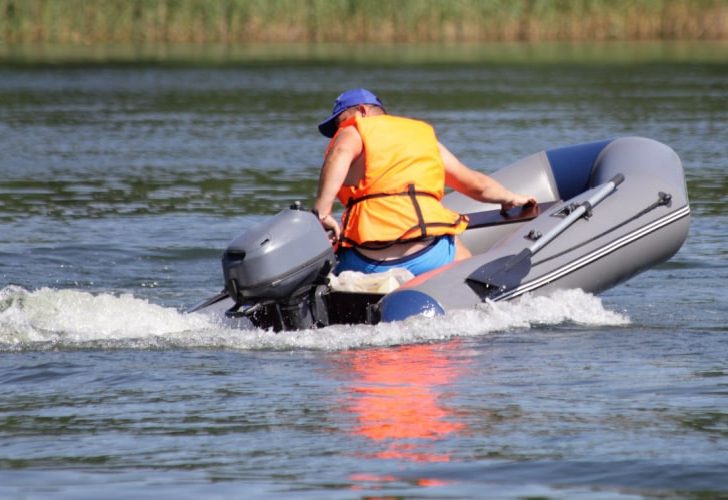You’re enjoying a nice day out on the water when, suddenly, your outboard motor begins to shake.
Maybe you’ve noticed this problem before. Maybe the shaking is minor, or maybe it gets worse while you’re idling or in gear. Maybe you can hear it, or maybe you can only feel it.
Whatever your specific situation, you’re probably wondering: what is causing my outboard motor to shake?
In this article, we’ll explore this question in-depth and attempt to help you find the answer you need.
Ready to get started?
Table of Contents
10 Reasons Why Outboard Motors Shake
It can be extremely difficult to track down what exactly is causing your motor to shake because there are so many potential causes. Let’s take a look at some of the most common issues and what to do about them.
1. Propeller Problems
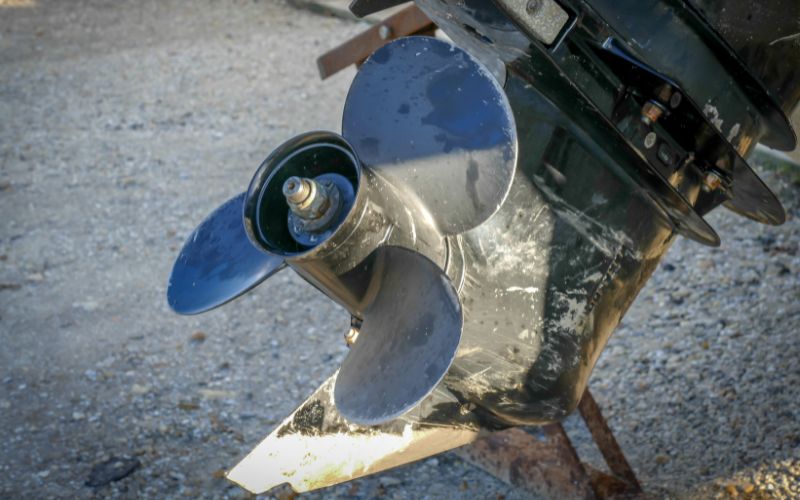
If your motor is shaking while in gear or changing speed, an issue with the propeller is the most likely culprit.
There are several different prop issues you’ll want to check for:
- Obstructed or fouled prop: Your prop may become tangled with seaweed, discarded fishing line, trash, or other debris that it picks up in the water. It may also be covered in an excess of marine build-up, especially if it hasn’t been used in a while.
This problem is easy to fix. Simply remove the obstructions or clean off the buildup. It’s good to keep a pair of gloves as well as the proper tools and cleaners onboard in case you need to deal with the problem while out on the water.
- Bent or damaged prop: If the prop becomes damaged, bent, or broken, it will likely cause some shaking. Keep an extra prop with you while out on the water so you can change it out if necessary.
- Poorly fitted prop: If you selected a poorly-fitting shaft, it will probably cause some shaking. Double-check your owner’s manual to make sure your prop is the right size. If the damage is to the taper, key, or keyway this may be what is causing it to fit poorly.
Once you have identified the problem, either fit the shaft with a new, properly fitting prop, or replace the damaged part. You may want to take it to a mechanic for this.
- Unbalanced prop: If the prop becomes loosened or out of balance, or if it is a foldable prop that doesn’t unfold all the way, you may experience shaking. Have the prop looked at and serviced by a mechanic or propeller shop.
2. Fuel Line or Filter Issues
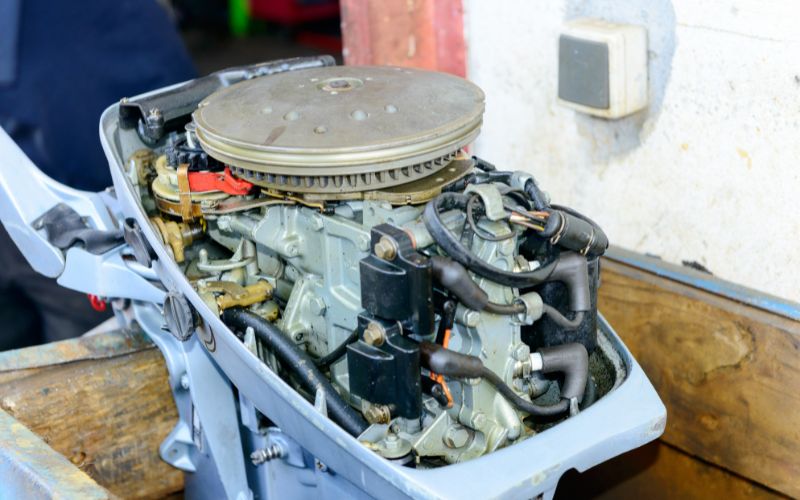
If the shaking seems random or intermittent and is accompanied by engine sputtering, you may have a clogged fuel filter or fuel lines.
If these components of the engine become clogged, then fuel will not be reaching the motor as it should be. This can result in shaking, sputtering, rough idling, and a tendency to cut out when shifting to a higher gear.
If you are experiencing any of these symptoms while out on the water, check your lines and filter for obstructions. They may become clogged with bits of debris that get sucked into the engine, such as bits of dirt, leaves, twigs, or insects.
3. Bad Fuel Pump
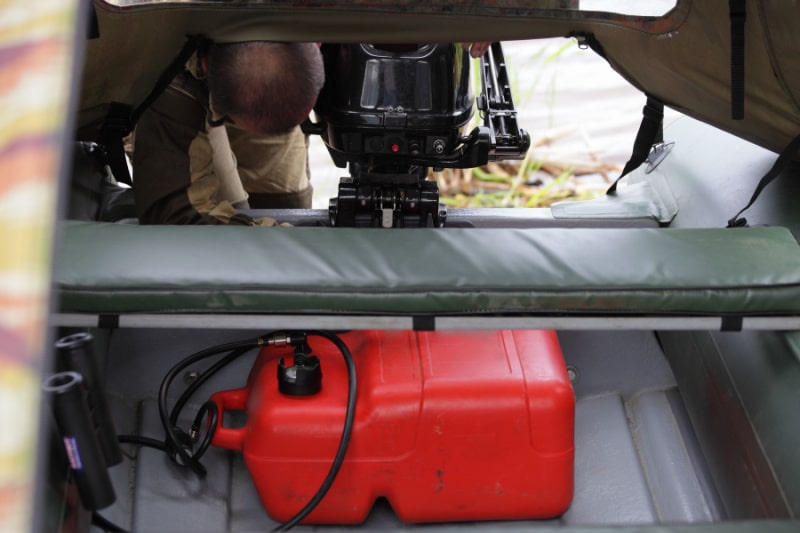
Perhaps you checked your fuel lines and filters and removed any potential clogs, but the intermittent shaking and sputtering persists. The problem may instead lie with the fuel pump itself.
A bad fuel pump may produce different kinds of vibrations. You may only experience the shaking while idling, or the symptoms may appear while you’re in a higher gear.
You may want to have the fuel pump checked by your mechanic, or you could test it yourself. You can do this by removing one of the spark plugs and inserting a compression gauge.
Compare the reading you get with what is appropriate for your outboard motor–you can find this information in your owner’s manual. If the reading on the compression gauge is different from what your motor is rated for, then a bad fuel pump is most likely your problem.
Have the fuel pump replaced by your mechanic.
4. Loose or Broken Engine Mount
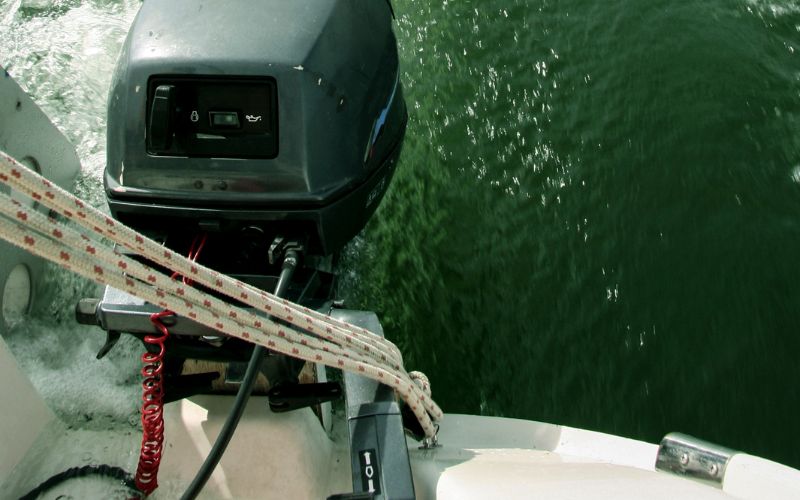
This is another common cause of engine shaking, especially while in neutral. It may also be the culprit if you notice the shaft wobbling significantly while at high speeds.
This problem can be relatively easy to identify, as it may produce a distinctive metallic ringing sound along with the shaking. What’s more, you may notice difficulty in steering if you have a loose or broken engine mount.
If the mount is only loose, all you will have to do is tighten it. It’s important to make sure you torque them to the proper specifications for your motor.
If they are broken, you may notice rust or rubber bits around the mount, and there may also be highly visible cracks or missing parts. These will need to be replaced.
5. Alignment Issues
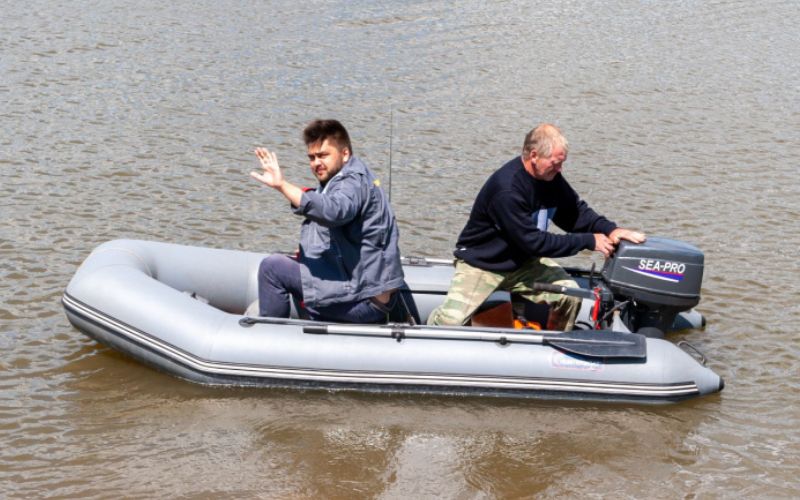
If any components are out of alignment, you may notice a persistent shaking that improves, but doesn’t disappear, at higher gears.
There could be different parts of the motor that are misaligned:
- The coupling: If your coupling is out of alignment, you will notice a distinct wobbling of the shaft when you are operating at higher speeds. The coupling may be wrenched out of alignment by worn or damaged motor mounts, so you will need to fix this root problem in order to fix the coupling.
- Harmonic balancer: A harmonic balancer may become misaligned due to the natural shocks and vibrations experienced on a boat. To test if this is your problem, double your RPMs and see if the engine is still vibrating. If so, have your harmonic balancer replaced.
- The engine: If you are experiencing consistent shaking, the engine itself may be out of alignment.
You can test for this by turning off the motor and attempting to rotate the prop while in neutral. If it is hard to rotate, disconnect the transmission from the prop shaft and try again. If it rotates easily this time, your engine is misaligned.
6. Bent, Worn, or Loose Shaft
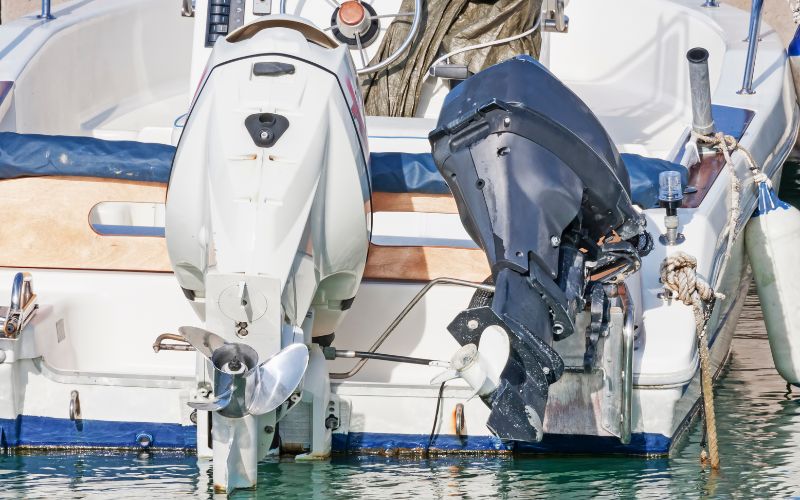
As with propeller issues, problems with the prop shaft can come in various forms and cause different types of shaking:
- Bent or damaged prop shaft: If the shaft is bent or damaged in some way, it will most likely produce a consistent shaking while in gear. Check the shaft for visible damage or take it to your mechanic for an inspection.
- Worn-out prop shaft: Components of the prop shaft, such as the cutlass bearings, may become worn over time. Check these components for signs of wear and tear or have your mechanic inspect them.
- Loosened prop shaft: Vibrations from the engine may cause the shaft’s mounting bolt or steering pivot to loosen over time. Check these parts and tighten them if necessary, or have your mechanic do this for you.
7. Problems While Idling

If your engine shakes while idling, there may be an internal problem with the engine. It will most likely require advanced diagnostics to track down the specific problem; unless you are skilled at working on small engines, take your motor to your mechanic.
8. Distorted Output Flange
If your prop shaft wobbles visibly while you’re in gear, the problem could be your transmission’s output flange. Again, this is a more advanced problem that will require specialized diagnostic tools. Take your motor to your mechanic.
9. Stripped Out Steering Arm
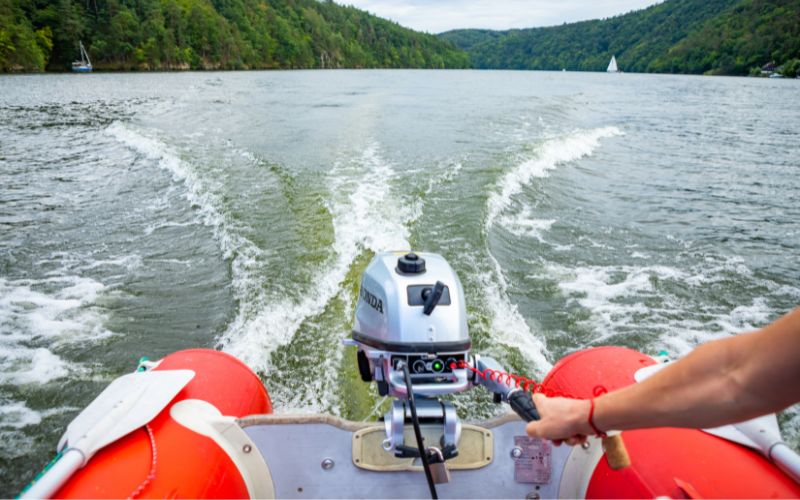
One commonly overlooked problem is a stripped-out steering arm. Shaking produced by this problem may occur while in neutral or in gear and is often confused for engine mount issues.
To check for a steering arm problem, attempt to swivel the lower unit around the steering tube. If it moves relatively easily and freely, you most likely have a stripped out steering arm. Take it to your mechanic for an official diagnosis and repair.
10. Damaged or Worn Drivesaver
A Drivesaver is a specific type of coupling that some boaters install on their outboard motor. It mounts between the propeller shaft and the transmission, and its purpose is to reduce shaking and vibration.
If you have a Drivesaver on your motor, remove it and check for visible signs of damage or wear and tear. If it is distorted in any way, have it replaced.

I created this site to help people – to help you – with your boat problems. Instead of helping one person at a time, I want this website to be the “one-stop-shop” for everyone’s boating concerns. Read more.

